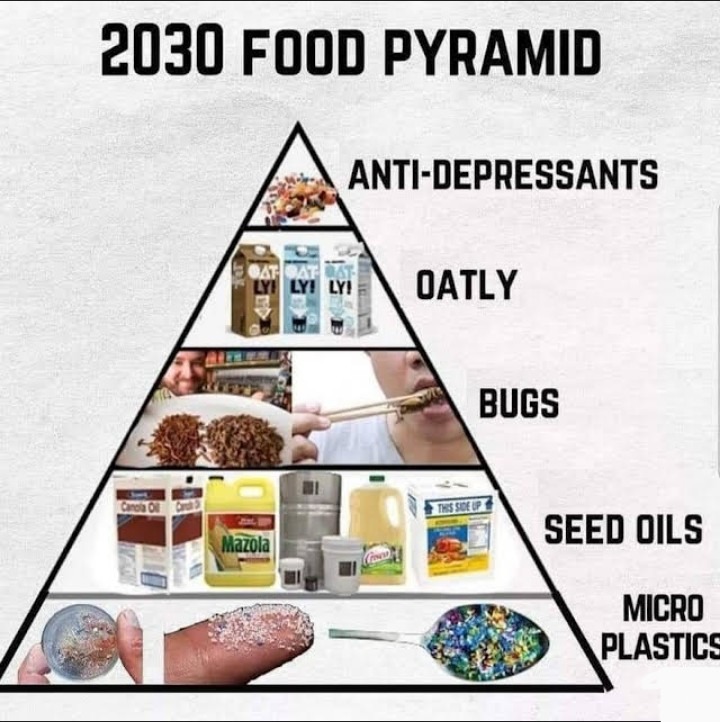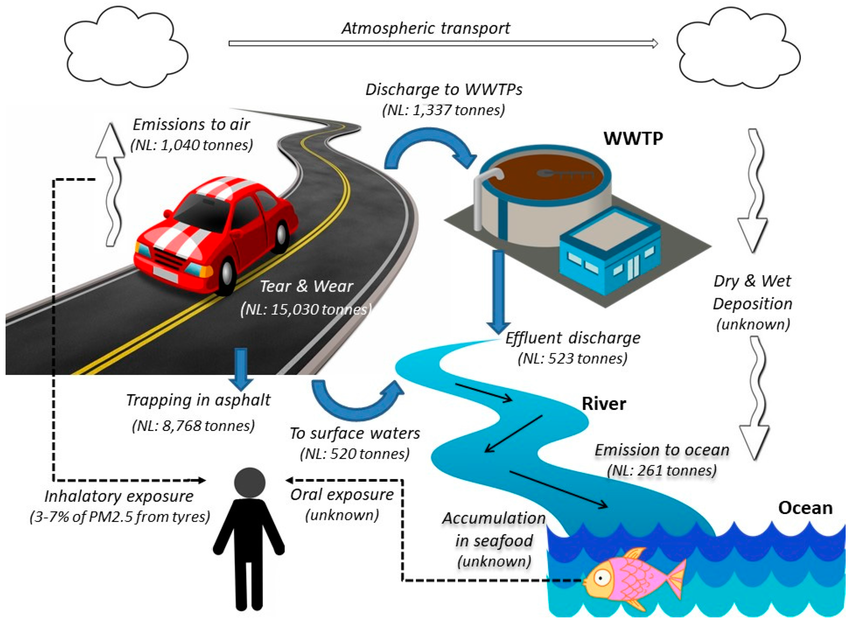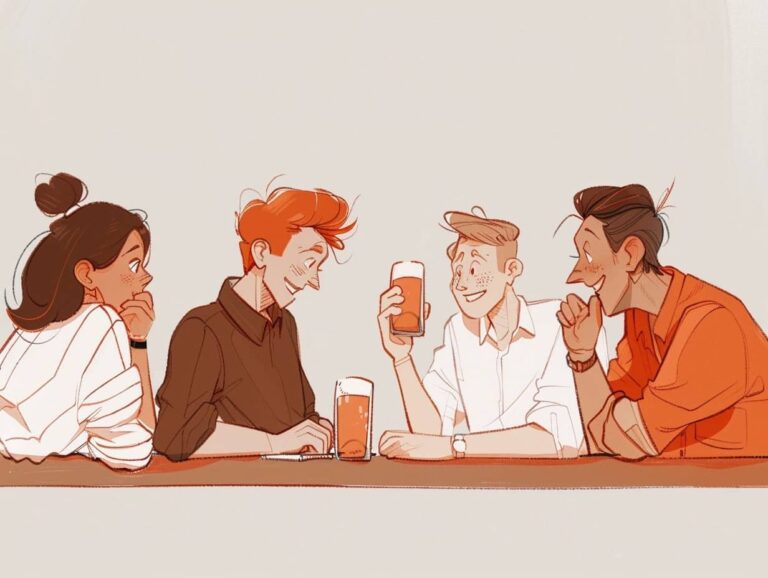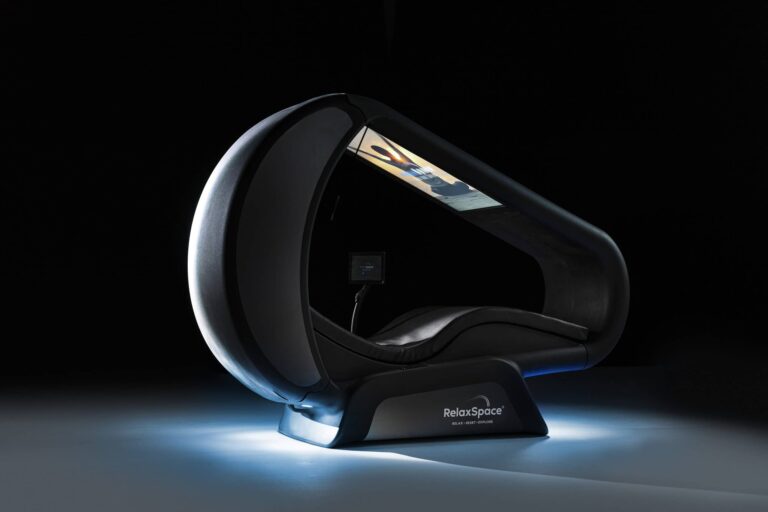Why I’m not that worried about microplastics (yet)
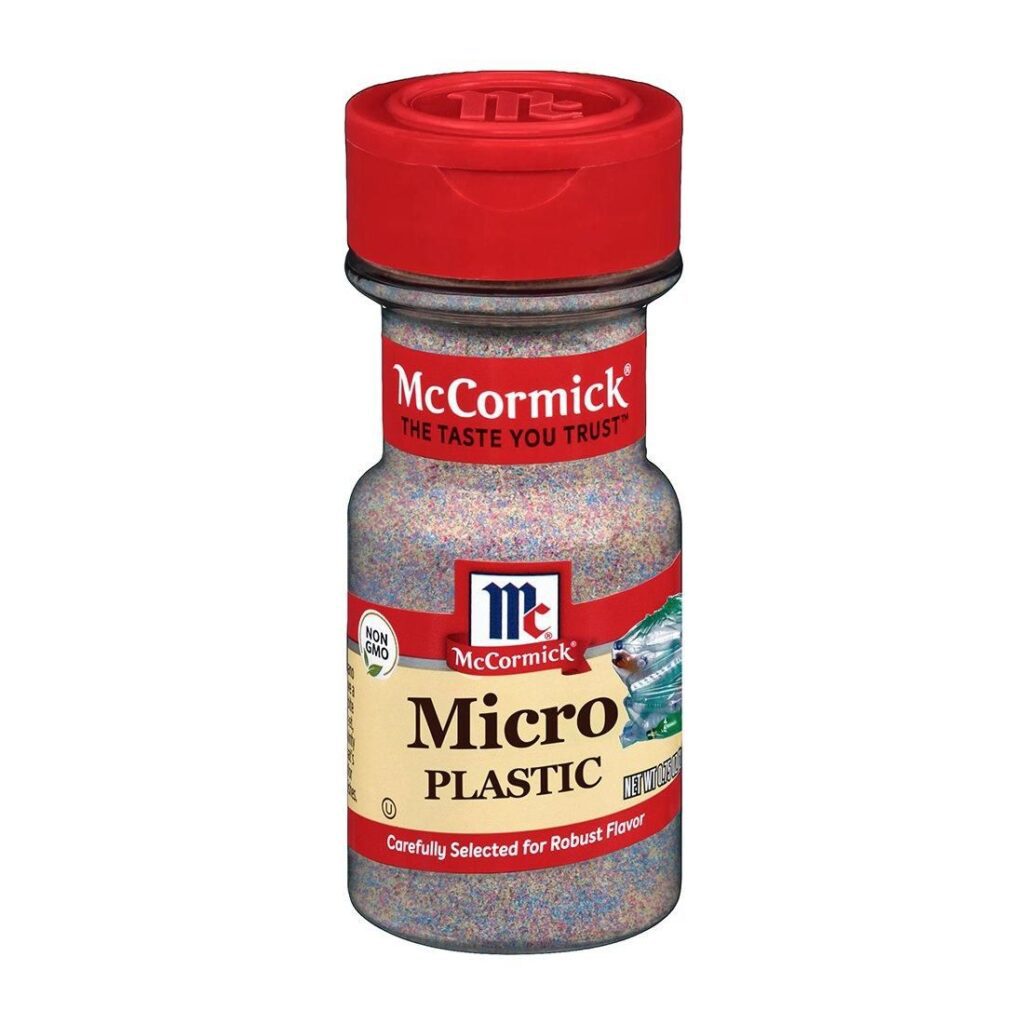
There’s a credit card’s worth of plastic in your brain.
How’d it get there?
From something that’s everywhere, invisible, and according to some people, going to kill us all
Microplastics.
If you’re reading this then you probably already know that microplastics are in our food, water, and air.
You probably also know that there’s alcohol in bananas, but we still feed bananas to our kids.
Why?
Cause the dose makes the poison.

While I’m sure we all agree that plastic in our body isn’t a good thing, if the amount of microplastics we consume is small enough to not cause serious health effects, then it’s not a good use of time and effort to go to crazy lengths to remove plastic 100% from our lives.
So the goal of this blog post isn’t to scare you about microplastics or tell you that you need to rearrange your life to avoid them.
The questions I want the answers to are:
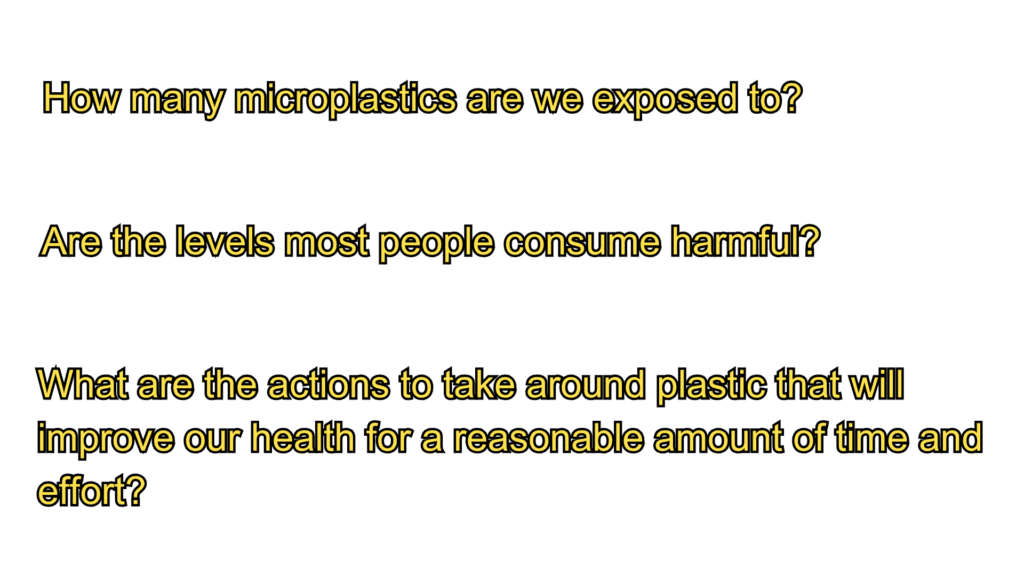
And most importantly, can I blame microplastics for all my health issues while taking no personal accountability for poor lifestyle decisions? (sarcastic laugh)
If microplastics are not that harmful – then removing plastic say, 30-50% from our lives could be a good thing to do for our health and the environment without taking too much added effort.
This would include easy lifestyle changes like not drinking from plastic bottles, avoiding paper receipts, or using plastic Tupperware.
But if microplastics are the root cause of all cancer, death, disease, and everything bad in the world as one side of the internet claims – then removing plastic 99% from our lives would be worth the serious mental and physical effort, time, and inconvenience that takes.
Those extreme lifestyle changes could include never ordering takeout food or using paper coffee cups, only wearing clothes made from cotton, wool, and silk, and completely avoiding seafood.
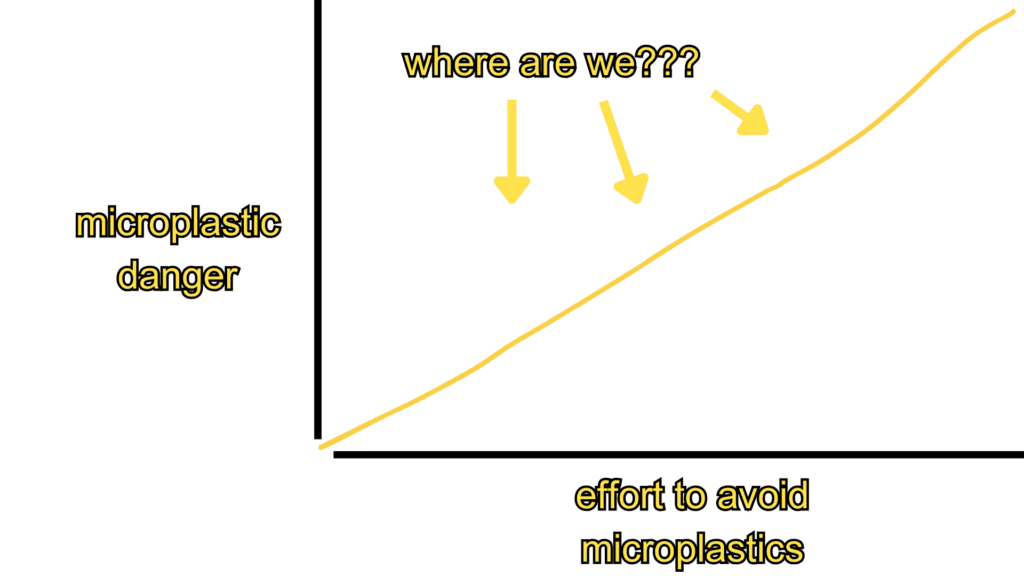
The answer of course, is somewhere in the middle. So let’s find the truth on microplastics – with a healthy dose of my opinion sprinkled on top 😉

Part 1: Microplastics for dummies
A microplastic is just a baby plastic 👶🏻
What do you think the deepest trenches of the ocean, highest mountain peaks in the world, and the air we breathe all around us have in common? 1.
Microplastic particles are there (and pretty much everywhere else).

The size of microplsatic particles ranges from 5 millimeters to 100 nanometers 2.
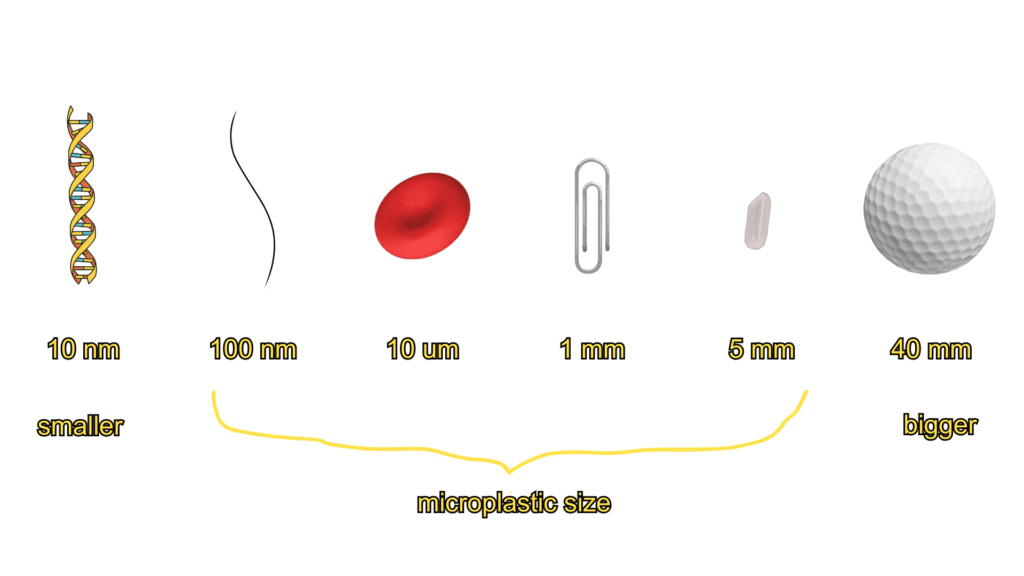
They come from…everywhere
“Where do microplastics come from Josh?” From the breakdown of larger plastics.
For example, when a plastic water bottle ends up in the ocean, it degrades, over time into smaller pieces, which are microplastics.
Then fish eat that microplastic -> that fish ends up on your dinner plate – > microplastics end up in you.
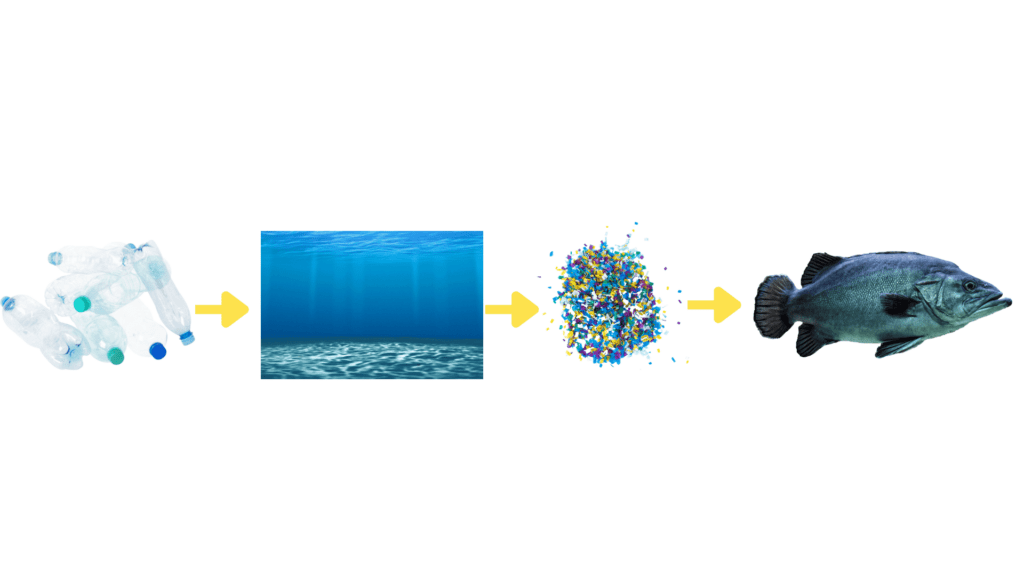
Plastic waste in the ground also degrades down into microplastics, which end up in the air, in plants, and in animals (and then the people who eat those plants and animals).
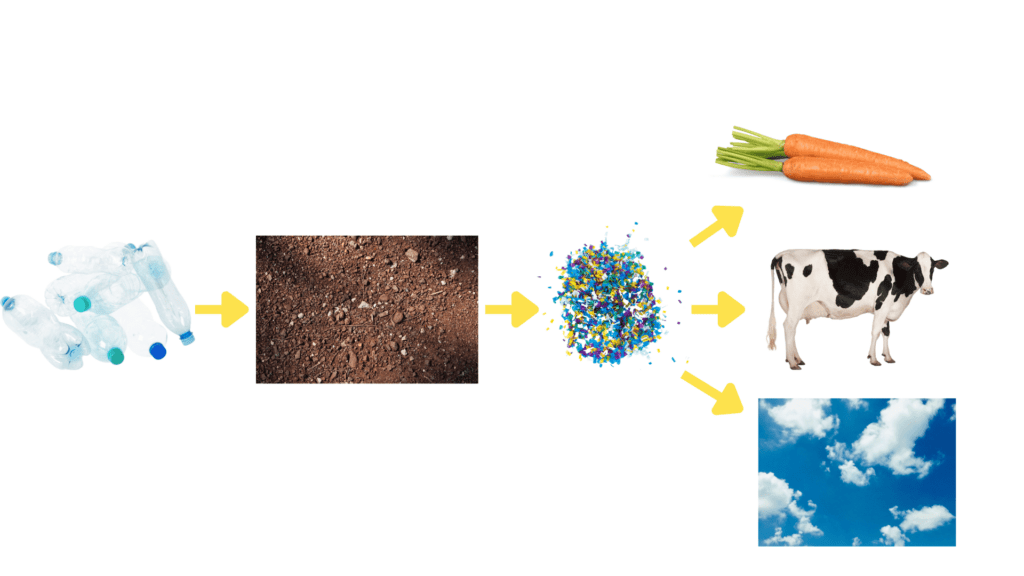
They come from plenty of other place too.
Car tire wear is actually one of the larger sources of atmosphere microplastics.
* A lot of microplastic detection technology is still in development. For example, the exact amount of microplastics in the air is difficult to measure. Ian Mudway, an expert in respiratory toxicology says, “The only stuff we can measure in the air is the big particles, and then we assume we are inhaling smaller particles” 3.
And of course, microplastics are found in food, water, and all the other stuff that comes packaged in plastic.
One study found that people who drink water from plastic bottles consume 90,000 microplastics annually compared to those who drink tap water consuming only 4,000 4.
Plastic food containers (Tupperware) also release microplastics, especially when they’re heated 5.
A well known study heated plastic containers in the microwave for 3 minutes and found that they released as many as 4.22 million microplastic and 2.11 billion nanoplastic particles from only one square centimeter of plastic area.
That study also found that even refrigerator and room-temperature storage of food in plastic containers releases microplastics.
Plastic cutting boards are another known microplastic source 6. And synthetic fabrics like polyester or nylon clothing release microplastics into the water supply and air when you wash them.
And inside you of course
So plastic is everywhere, it sheds microplastics constantly, and through our food, water, and air they end up inside our bodies.
So far, scientists have found microplastics in human blood, lungs, placentas, breast milk, livers, brains, and testicles.
One popular study you may know about claims that the amount of microplastics we consume every week is equal to a credit card’s worth of plastic 7.
According to a study by Professor Matthew Campen at the University of New Mexico, the adult human brain has 5-10g of plastic in it (that’s the size of a plastic spoon) 8.
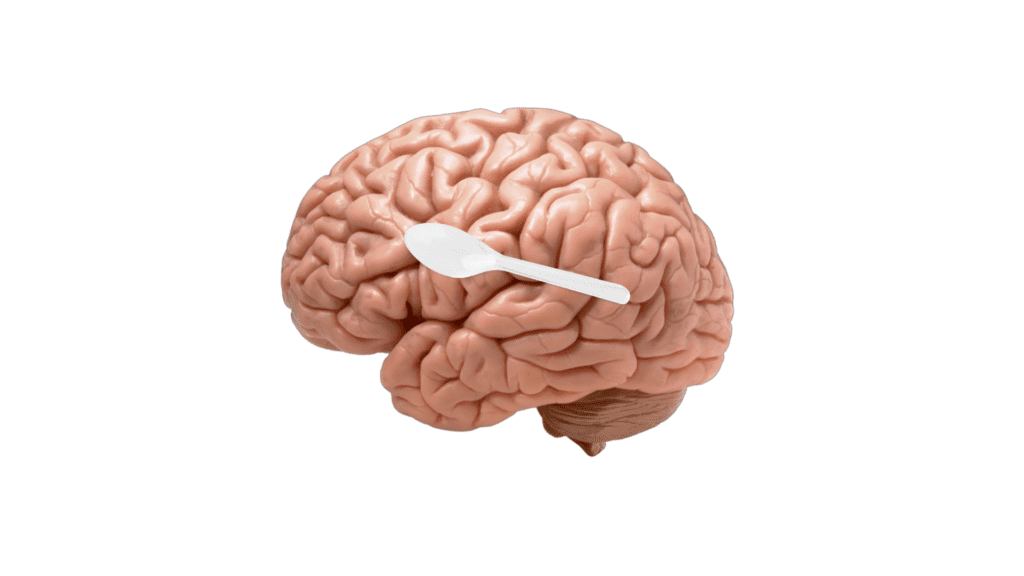
Another study found microplastics in 100% of human testicle samples 9.
Part 2: Health effects
So what?
Alright, scary stuff. But before we freak out too much, let’s remember that just because microplastics are in our bodies doesn’t mean that they’re going to kill us.
The next question we have to answer is:
Is the level of microplastics in our body proven to cause harm? Or is having some amount of plastic in our brains and balls no biggie?
The mechanisms through which microplastics may harm the body are:
- Physical damage
- Chemical toxicity
- Carrier effect
Physical damage means inflammation and tissue damage.
Chemical toxicity comes from the additives in plastic like phthalates and bisphenols (more on those in a sec) which are known endocrine disruptors.
The carrier effect just means that microplastics absorb and transport other environmental pollutants.
So that’s the theory.
But what does the science say about microplastics‘ health effects?
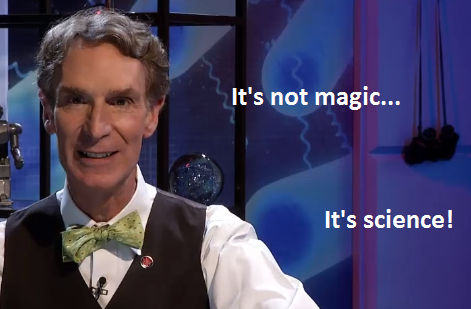
Well as you could guess, science says that at high doses, plastic inside you is bad.
But spoiler alert: There aren’t any studies that prove microplastics are harmful to human health at environmental exposure levels.
Most human studies don’t even address health, they just find microplastics.
“Yep, they’re in there!”
And then there are animal studies that test the health effects, but they’re at super high plastic doses
Like, “Let’s make these mice drink a plastic smoothie and see what happens”
Animal studies
Mice drink water with microplastics, get dementia 🧠
A recent study by University of Rhode Island researchers gave mice microplastics in their drinking water for three weeks 10.
After the 3 weeks, microplastics were found in the gut, liver, kidneys, lungs, spleen, heart, and brain. Finding them in the brain is especially concerning because that means they were able to cross the blood-brain barrier.
The plastic water also caused changes in the mice’s behavior, leading to them showing symptoms similar to human dementia.
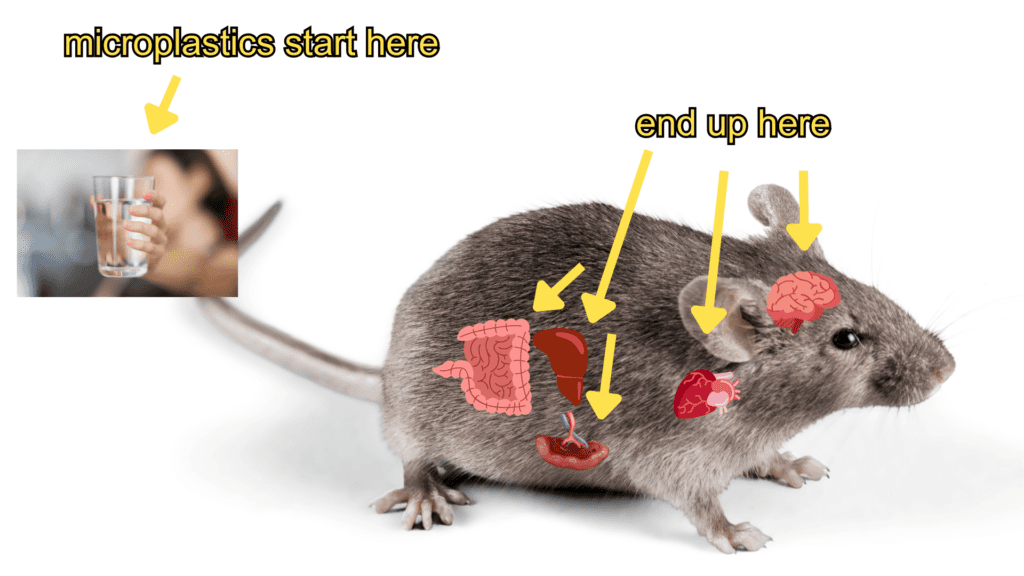
This study starts the conversation on how microplastics may travel from the water in our GI tract to other organs in the body and even past the blood-brain barrier and into the brain.
The downside is that as an animal study, we’re not sure yet how it applies to humans. Only 50% of rodent studies end up translating over.
We also don’t know the concentration of microplastics in the water given to the mice and how it compares to the amount of microplastics we are exposed to daily.
Microplastics hurt immune cells
A study by UNM researchers looked at the effects of polystyrene microplastics macrophages (an immune system cell) 11.
The study found that when macrophages swallowed microplastic particles, it changed how efficiently they used energy. They used glycolysis more and used their usual, more efficient energy-producing process (with mitochondria) less.
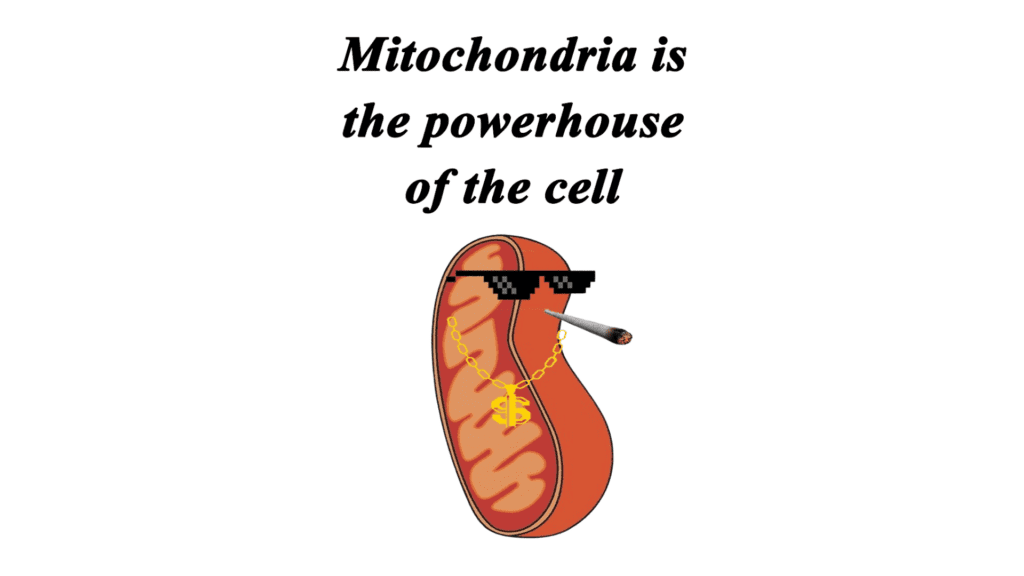
They also found that the plastic macrophages released inflammatory chemicals.
What does it mean? It could mean that microplastics interfere with our immune system.
If that’s the case, microplastics would be a part of the explanation for skyrocketing rates of autoimmune diseases 11.
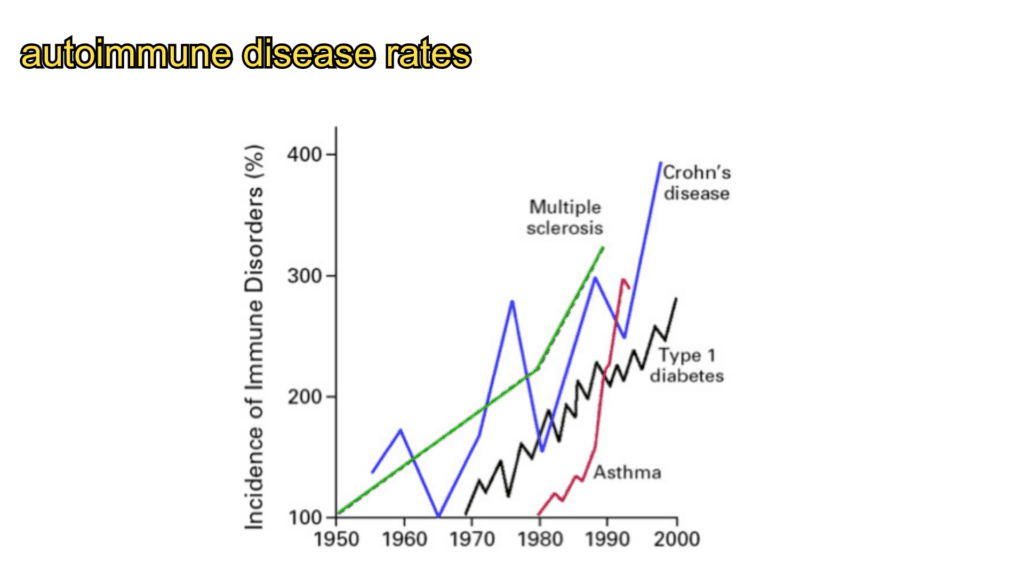
So the criticisms of this study are:
While it gives insight into how microplastics alter immune cells in petri dishes… petri dishes are not people.
As an in vitro (petri dish) study, we don’t know how the findings apply to in vivo (living organism) situations.
The study also doesn’t tell us the concentration of microplastics used (was it an unrealistically high amount?) and the macrophages poor short-term response doesn’t tell us how they deal with microplastics’ when exposed slowly over time. Maybe they adapt?
Mice exposed to microplastics have lower sperm count & testosterone 🍒
Mice exposed to polystyrene microplastics for 28 days were found to have decreased sperm quality, lower testosterone levels, and inflammation in the testes 12.
The microplastics also caused increased sperm malformation rates and damage to reproductive structures.
The authors of this study think these findings could mean that microplastics deserve part of the blame for rising rates of male infertility and lowering semen quality (obesity, diet, and pollution are other factors).
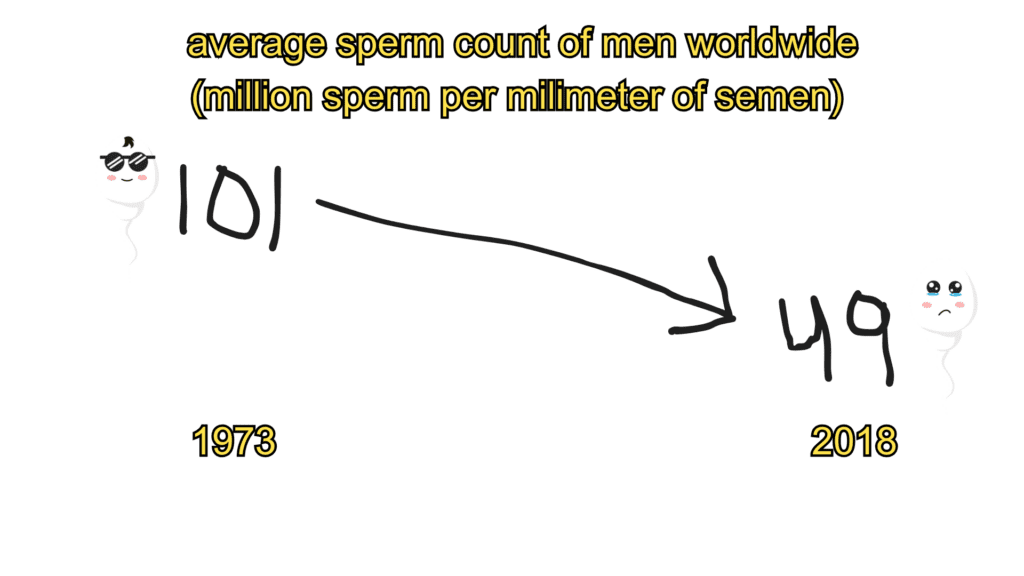
No joke: this study has me genuinely considering throwing out my underwear (it’s all polyester).
Plastic kills kidney cells
The screenshot below is from a study showing how high levels of plastic kill kidney cells 13.
However, the caveat is that the amount of microplastics used in this study are so high that we would never experience them.
Human studies
Ok, those were animals and petri dish studies. Let’s talk about a few of the most popular human microplastic studies.
Microplastics double risk of heart attack and stroke
This 2024 study found that heart disease patients with microplastics in their carotid arteries were twice as likely to suffer a heart attack or stroke 14.
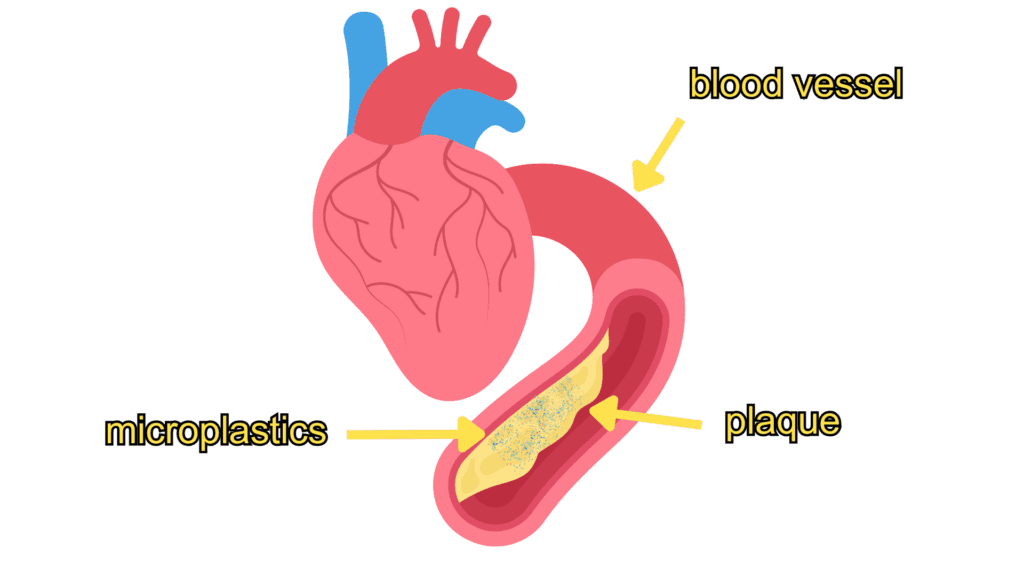
So this study is concerning, and I definitely want more research to follow up on it, but I’m not sure that we can say “microplastics double your risk of heart attack” yet.
As we all know, correlation does not equal causation.

Maybe, instead of the microplastics causing more cardiovascular issues, people with higher levels of microplastics in their arteries have other lifestyle factors or exposures that contribute to their increased CV risk
For example, people with microplastics in their blood are probably more likely to eat foods packaged in plastic, which is processed, fatty, unnutritious food that causes heart disease and stroke.
There’s also a possible explanation of reverse causality.
The disease process of plaques building up in arteries could cause an increased surface area to catch microplastics in the artery, so the microplastic accumulation may actually come after the disease happens, not before.
Microplastics found in human placentas
This well-known study found 12 microplastic fragments (ranging from 5 to 10 μm in size) on the fetal and maternal sides of the placenta and in the chorioamniotic membranes 15.
No health effects were measured; so we still don’t know how this level of microplastics affects fetal health and development.

While this study is a popular one to point to (babies are cute, we all want them healthy) I think the strongest argument against the findings is the high risk of microplastics contaminating the sample during collection or analysis.
This is Dr. Ian Mudway’s (respiratory toxicologist) explanation for this study’s findings and I might agree with him.
Since microplastics are in the air (especially in a hospital environment with lots of single-use plastics) it’s very possible that they were not actually in the placentas and instead got into the samples during collection and transport to the lab.
Microplastics found in human stool 💩
Another study found an average of 20 microplastic particles per 10g of human stool 16.
This confirms the theory that we ingest and then pass microplastics through our digestive systems.
No health effects were measured or linked to this finding and like the placenta study, there is potential for sample contamination during collection or analysis.
It’s also important to note that the sample size was 8 participants.
Microplastics found in human blood 💉
This study found microplastics in 17 out of 22 human blood samples, with an average of 1.6 μg/ml 17.
No health effects were measured and again there is the potential for sample contamination.
Plastic industry workers develop lung disease
There are many known cases of workers in plastic factories developing respiratory diseases at a much higher rate than the general population.
In one case, a 28-year-old businessman developed asthma after exposure to thermoplastics used in 3D printing 18.
In another a 66-year-old patient developed hypersensitivity pneumonitis after working in the Polyethylene terephthalate (PET) production industry 19.
In a Baltimore plastic injection molding facility, five employees were confirmed to have developed Legionnaires’ Disease, with one worker dying 20.
While these add to the proof of the danger of plastics and show their danger at high doses, they don’t provide clear, dose-dependent evidence of harm at the levels you and I are exposed to outside of plastic factories.
Part 3: Additives
While the evidence for microplastics harming our health is still being collected, it seems that the additives in plastic like BPA, phthalates, and Pfas, (found both in microplastics and large plastics) are agreed upon by everybody to be dangerous.

“BPA Free” is meaningless
BPA is probably the most well-known plastic additive.
While doing the research for this article I learned that the proudly labeled “BPA-free” plastic water bottles and tupperware I own are just as dangerous as plastics with BPA.
Why?
In BPA-free plastics, the BPA compound (fancy name = Bisphenol A) is just replaced with BPS (Bisphenol S) which is equally as toxic.

Professor Joseph Allen of Harvard School of Public Health calls this process “chemical whack a mole” or “regrettable substitution” 21.
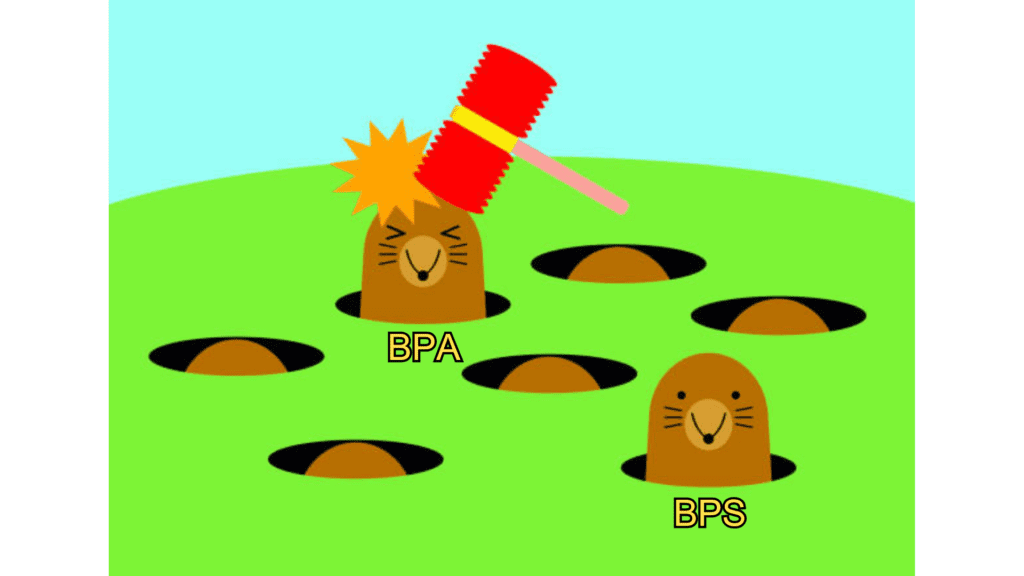
“BPA-free means the product lacks BPA, not that it’s free from other toxic chemicals,” says Dr. Rhonda Patrick
Also, the tag “microwave safe” only means that the plastic won’t melt in the microwave, not that it’s free of toxic chemicals or is safe to heat up and eat off of.
Health effects of BPA, BPS, and Phthalates
Plastic additives are known to cause serious health problems.
Studies found that prenatal and early-life exposure to plastic additives may affect brain development, leading to behavioral issues like hyperactivity, anxiety, and depression in children 22.
BPA and phthalates have been associated with altered reproductive function, including effects on fertility, prostate health, and mammary gland development 23.
Some research found a possible link between these chemicals and increased risk of obesity, type 2 diabetes, and cardiovascular disease 24.
Animal studies have shown that BPA exposure may suppress immune function 25.
Some studies suggest a possible link between additives and certain types of cancer, including breast and prostate cancer 26.
One study had participants eat canned soup for five days, which led to a significant increase in urinary BPA levels, and a measurable change in hormone levels 6.
Part 4: Takeaways
Are microplastics really our biggest health problem?
Okay, microplastics and plastic additives are everywhere, they’re inside of us, and they’re not good for us.
But, the jury is still out on how bad and at what level. Because there are no studies proving how our current level of microplastic ingestion affects health outcomes.
So without any evidence that our current level of microplastic consumption harms our bodies, how much of our lives should we change around to avoid them?
I mean the next time you’re in your kitchen and at the grocery store, try to avoid buying food packaged in plastic. It’s not possible.
Meanwhile…
Heart disease is out there claiming one in three Americans. 90% of those cases could be prevented with lifestyle changes.
Air pollution contributes to 4.2 million premature deaths worldwide each year.
2/3 of Americans are diabetic or prediabetic, most are overweight or obese, and 70% of food in grocery stores is ultra-processed.
Are microplastics even our biggest plastic problem? 🌎💨♻️
You could argue that microplastics aren’t even our biggest plastic problem.
Dr. Ian Mudway who’s an expert in respiratory toxicology, says that there are 2 more pressing and well-established problems related to plastics that should get our immediate attention:
- Waste
- Pollution
Globally, we produce over 300 million tons of plastic every eyar, with only 9% of it getting recycled. The rest piles up in landfills or is incinerated.
There’s actually now more man-made material on Earth than biological material. This includes bacteria, flora, fauna, and all other living organisms.
Dr. Mudway says, “If we are really going to be worried about the health effects of microplastics, I would be starting in Indonesia and the Philippines and in the countries where we are shifting huge plastic waste and where much of it is actually being burnt in open fires to get rid of it.”
The health impacts of burning plastics are well-documented and severe. It releases a cocktail of harmful chemicals into the air like dioxins, furans, mercury, and PCBs. These toxins cause immediate respiratory issues and long-term health problems.
So while microplastics are a concern that warrants research, the more immediate and severe impacts of plastic waste, burning pollution, and overall plastic production I think are more urgent.
These issues have clear, documented effects on human health and the environment.
How I’m limiting plastic in my life
That being said, plastic in our bodies isn’t making us healthier, some of these human and animal studies are seriously concerning and plastic waste in the environment isn’t making our earth a better place.
So after learning what I have while writing this article, I am going to take some precautions to limit the plastic in my life:
Kitchen
I’m gonna stop heating any food in plastic containers and use glass bowls and containers for all reheating.
I’m also going to use glass containers for as much food storage as I can, and then fill in the gaps with plastic tupperware.
I don’t currently drink much water from plastic bottles but I used to. From now on I’m going to avoid plastic water bottles whenever I can and only use non-plastic reusable water bottles.
Coffee ☕
I also am going to make an effort to bring my Yeti coffee mug with me when I go to coffee shops to avoid disposable “paper” coffee cups (coated in plastic) since heat and plastic seem to be a smart combo to avoid.
This also reduces waste and keeps my coffee hot longer.
Underwear
After seeing the mouse study with microplastics seriously affecting testosterone and sperm health, now knowing the hormone-disrupting effects of plastic additives, and along with the societal rates of plummeting male fertility, I’m probably going to throw out my polyester underwear and switch to a non-plastic option.
In summary
What We Know:
- Microplastics are in our food, water, air, and bodies.
- At high doses, plastics and their additives cause harm.
- We’re exposed to a lot of plastic, and that exposure is increasing.
What We Don’t Know:
- How harmful the current levels of microplastic exposure is to human health.
- The long-term effects of chronic, low-dose exposure to microplastics.
The science of microplastics is still evolving. Keep an eye on new research, but don’t try too hard to avoid plastic, it’s everywhere and you’ll go crazy.
While microplastics are a concern, and I’ll be making an effort to avoid using plastic when possible, they’re small fish swimming in a sea of other, whale-sized health threats. Heart disease, obesity, air pollution – these are the heavyweights in the ring of public health, and we know how to fight them.
It’s also important to remember how much the invention of plastic has helped our world and allowed for the cheaper production of so many things in healthcare, food safety, and countless other areas of our lives.
I’ll be applying the precautionary principle while I wait for more conclusive evidence, taking steps to reduce my plastic exposure where I can, without going to extremes.
The plastic waste crisis and the pollution from plastic production and incineration are immediate, well-documented problems. Supporting efforts to address these issues could be the most effective way to tackle our growing plastic problem.
While I wait for science to catch up, I’m not going to live in fear of every plastic item in my life. Instead, I’ll make some easy swaps where I can and focus on the health stuff I know works – sleep, eating real food, exercising every day, and avoiding stress.
Stress kills too, so I encourage you to not let microplastic panic keep you up at night, but maybe give that plastic water bottle collection in your car a side-eye.
– Josh
